|
|
|
Archive for the 'Role Models' Category
Friday, July 27th, 2018
 
A Friday series exploring Startups and the people who make them go. Read all If the Shoe Fits posts here.
Short post, longer articles, but worth the read.
Not all founders are focused on valuation.
Some think it through, realize their mission is the most important thing and find like-minded investors.
What has made us really successful is this idea that we’re not building a company. What we’re doing is solving a problem. In that sense, we’re not emotional about our solution but, rather, constantly listening to our customers and the market and being able to then adjust alongside that. –Shivani Siroya, founder of Tala.
Others get seduced by the idea of ego-boosting valuations, money to drive growth and a buy-out that lets them retire — or do it again.
Most founders dream of building a product that eventually becomes a household name and sells for a billion dollars, but chasing that goal comes with some downsides. The grow-at-all-costs model inevitably forces you to sacrifice something you care about in service of short-term revenue growth, whether that’s your culture, your employee experience, your products, or your creative approach.
That said, when they find the fun gone some go to great lengths to extricate themselves and their company from the investor attitude of “growth first/last/always!” as opposed to the radical idea of pleasing customers, employees and thinking for the long-term.
The Wistia founders felt so strongly that they preferred debt to selling — a large amount of debt.
We turned down the offer to sell Wistia and instead took on $17.3M in debt. This allowed us to buy out our investors, gain full control of Wistia, and take the path less traveled in the tech industry.
Read Wistia’s story, as told by it’s founders, on it’s site.
There’s a lot of hard-won wisdom, along with pragmatic explanations of what look like touch-feely decisions.
What is often forgotten in startup land is the high value associated with being happy to get up and go to work.
Image credit: Tala and Wistia
Posted in Culture, Leadership, Role Models | No Comments »
Tuesday, July 17th, 2018

Lots of good external reading today.
At every level, some of the toughest, most hard-headed, business people work for Blackrock; not surprising, since it is the world’s largest asset management firm, with more than $7 trillion under management.
That’s large enough to get most financial markets to sit up and take notice when it speaks — and speak it did early this year.
Larry Fink recently created a shockwave. As cofounder, chairman, and CEO of BlackRock, one of the world’s largest global asset management firms, in an open letter to CEOs he caught the attention of financial markets and beyond by insisting on the importance of companies serving a social as well as financial purpose.
The idea that corporations have a social responsibility to a much larger audience than their investors are heresy in the financial world.
But Fink can’t be ignored as a liberal do-gooder, especially when he backs his comments with hard data.
This was followed up a few months later by Jonathan McBride, managing director and global head of inclusion and diversity at BlackRock.
Blackrock hit the nail on the head with McBride’s title — not ‘diversity,” but diversity and inclusion.
Hiring a diverse workforce is actually the easy part, because there is a multitude of talented candidates available once you knock down bias, unconscious or not, laziness, and trying to substitute apps and AI, which carries the same bias as it’s creators, for human thought.
Changing attitudes so those hired are included, developed and utilized is the hard part.
Recently, the company distributed a booklet called BlackRock at Our Best: The Power of Diversity that captured the diversity and inclusion guidance that the company had been providing to its managers for about a year and a half. He said it was placed on every U.S. employees’ seat on International Women’s Day (March 8), which was also the last day of an extended company “jam.”
The booklet included research findings about diversity in business, which McBride describes as “a key unlock” for getting people on board. He said it shifts the burden of proof away from the individual person arguing for diversity, where it traditionally has been. Having hard data, he said, helps managers respond to questions such as “So has diversity ever worked?” or to statements implying that because a particular employee didn’t do well, diversity must be wrongheaded. And to those suggesting the company is fine as is — if it ain’t broke, why fix it? — you can hit the ball right back over the net. Said McBride: “The data says we can do even better.”
And that is the difference.
When you have hard data, not touchy-feely or do-the-right-thing arguments, and that data provides a proven path to more and better success for both individuals and the company as a whole, people will embrace it.
Keep in mind that diversity and inclusion is a way to improve business results, not a demand that people change their personal values.
People can believe anything they want as long as those beliefs don’t interfere with achieving their company’s objectives.
Image credit: Blackrock
Posted in Communication, Culture, Role Models | No Comments »
Friday, July 13th, 2018
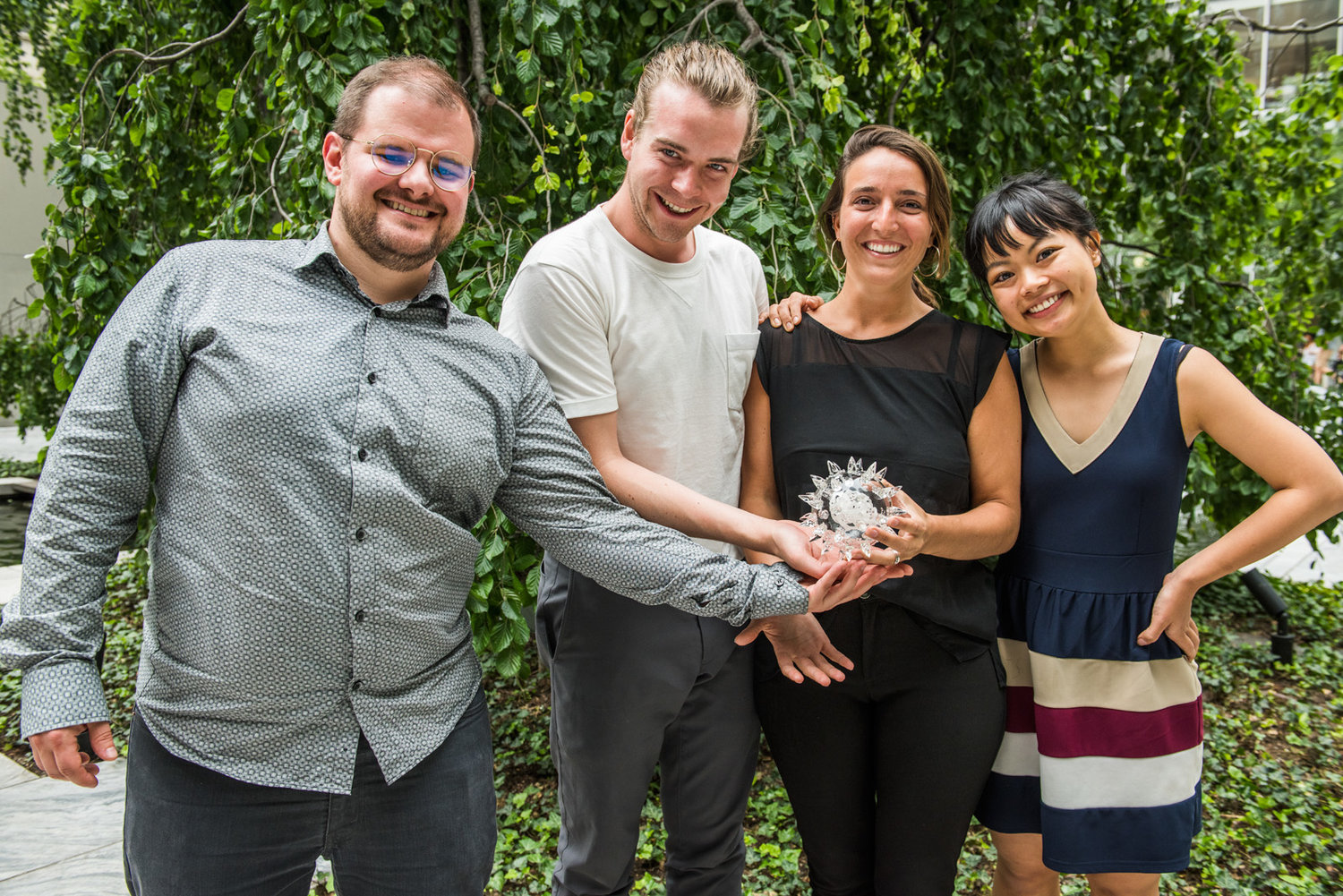
A Friday series exploring Startups and the people who make them go. Read all If the Shoe Fits posts here.
Invent: Create or design (something that has not existed before); be the originator of.
Inovate: Make changes in something established, especially by introducing new methods, ideas, or products.
If you look carefully there is very little actual invention going on these days, it’s mostly innovation, based on previous products.
However, sometimes innovation is radical enough that it should count as invention.
Consider the lowly toilet.
The Gates Foundation has been funding the effort to reinvent the toilet.
In 2011, the Gates Foundation launched the Reinvent the Toilet Challenge to bring sustainable sanitation and hygiene solutions to the 2.5 billion people worldwide who do not have such access. The challenge, which is ongoing, is a global call to researchers around the world to develop innovative and financially profitable systems to manage human waste. The systems must operate off-grid, cost less than $.05 per day, and function in poor, urban settings.
Even corporate giants got into the effort.
Kohler—a leading U.S. manufacturer of toilets (…) received a Gates grant in 2014, describes these toilets as “stand-alone units that take in wastewater, then disinfect and purify it to be reused for toilet flushing.”
But water is also a scarce commodity, even when it’s reused.
Now, from a group of students at the University of British Columbia, comes the MYCOmmunity Toilet.
The MYCOmmunity Toilet consists of a mycelium tank that is small enough to sit inside each individual dwelling. (…) when it’s full, the toilet is buried in the ground or left somewhere out of the way for another 30 days to allow the composting process–aided by the mushroom spores–to finish. Each toilet includes local seeds, which can be planted on top of the toilet, allowing plants or crops to grow from the human waste.
Although it was designed specifically with refugee camps in mind, it would seem to have far greater potential.
The MYCOmmunity Toilet qualifies as an invention — with the potential to truly change the world.
Image credit: 2018 Biodesign Challenge
Posted in Entrepreneurs, If the Shoe Fits, Innovation, Role Models | No Comments »
Tuesday, July 10th, 2018

There is much talk about the importance of empathy in today’s workplace, both externally and internally — but is empathy enough?
Is it enough to put yourself in the other person’s shoes? Is it even possible when the shoes are from a totally alien situation. Can a white guy, born with all the advantages those two words imply, really feel, i.e., empathize, what a dark-skinned woman/LGBT feels in the same circumstances?
Doubtful, if for no other reason than for one it’s an academic exercise and for the other it’s the reality of life.
For empathy to have meaning it needs to move from intellectual effort to real world action, as LinkedIn CEO Jeff Weiner said in his graduation speech at Wharton, “Put another way, compassion is empathy plus action.”
Not just at work, but life in general.
Compassion is not just morally correct, it offers substantial ROI, including building trust, to those who practice it.
The flip side is developing a culture with a compassionate ethos. That’s what our leadership team has tried to do at LinkedIn; create a culture where people take the time to understand the other person’s perspective, and not assume nefarious intention; build trust; and align around a shared mission. After nearly 10 years, I still celebrate the fact we can make important decisions in minutes or hours that some companies debate for months. Create the right culture, and you create a competitive advantage.
Obviously, as with any top university, the Wharton graduating class is privileged, no matter their color, gender or orientation. The alumni network will confer opportunities long after the degree, itself, does.
Read Weiner’s thoughts, because adding compassion to your skills set/qualifications is probably worth more in the long run.
Image credit: LinkedIn
Posted in Culture, Role Models | No Comments »
Wednesday, June 20th, 2018
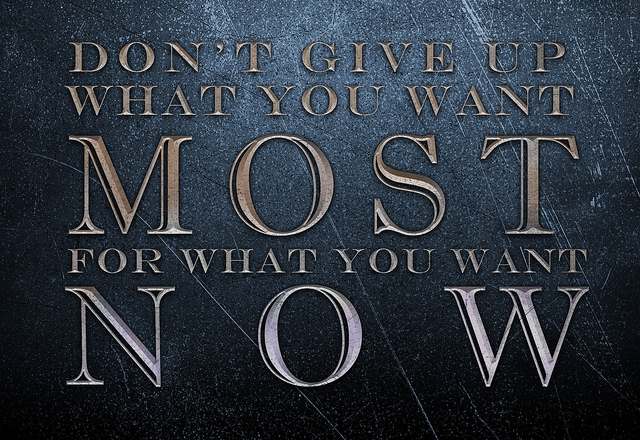
I read two articles yesterday. They both focus on how the long-term thinking of Jeff Bezos and Marc Benioff inform their decision making and are well worth your reading.
Bezos is famous for ignoring Wall Street for Amazon’s first two decades.
When it comes to making the most important and the most long-term decisions, Bezos has a simple rule that’s quite useful: “Focus [your vision] on the things that won’t change.”
At Amazon, this means that everything is built around their value of customer obsession.
Benioff has a different approach to making decisions, but still based on the long-term vision he embedded in Salesforce’s culture from the day of founding.
I came back with a clear vision of what the future of the internet was going to be in regards to software-as-a-service and cloud computing. I also had a much deeper sense of my spiritual self. So I said, “When I start a company, I will integrate culture with service.”
When I started Salesforce, on March 8, 1999, I said we’re going to put one percent of our equity, product and time into a foundation and create a culture of service within our company. We’ll be creating new technology, the cloud; we’ll be creating a new business model, subscription services; and we’ll create a culture built on philanthropy.
Last month Warren Buffett, Jamie Dimon and a legion of executives came out publicly against Wall Street’s short-term focus.
The emphasis on quarterly earnings, and the importance of beating estimates, is warping American business and the economy, argue almost 200 CEOs who belong to the Business Roundtable, a lobbying organization. Short-term thinking leads corporations to choke back on hiring, and to starve research and development of the spending the fuels long-term growth. The pressure of quarterly earnings is one reason fewer companies are interested in going pubic, preferring the slower growth that comes with being private than the scrutiny that comes with being listed.
Wall Street’s short-term thinking never got a toe-hold at either Salesforce or Amazon, but the reasons it didn’t created significantly different cultures.
While Benioff’s obsession culminates in giving back, Bezos’ obsession comes at a substantial cost to Amazon warehouse workers, the environment and even society.
Image credit: Scott Ellis
Posted in Culture, Personal Growth, Role Models | No Comments »
Friday, June 15th, 2018
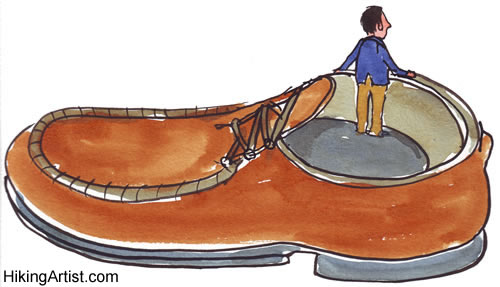
A Friday series exploring Startups and the people who make them go. Read all If the Shoe Fits posts here.
Miki and I want to congratulate Jerry Nemorin, founder and CEO of Lendstreet, a fintech startup. As a board member I’ve been with Jerry from the start and know how hard he’s worked, as well as how much he cares.
He cares about his team, his company, and his investors, but most of all he cares about Lendstreet’s ability to help its customers to a better life.
Lendstreet restructures debt for consumers in financial distress. A badly kept secret is that healthcare expenses is the number one reason that people go bankrupt and families lose their homes. In fact, most middle and low income families live on a shoestring — the average family only has a few hundred dollars in the bank to deal with emergencies.
As a consequence, a seemingly small thing like the car breaking down can put an entire family spiraling downward to homelessness. Lendstreet interrupts this cycle by using technology to restructure the debt and ensure that the family has the necessary liquidity to get through hard times. In addition, they educate people on financial best practices, including how to improve their credit score.
In essence, Lendstreet provides technology-based solutions and resources that reduce consumer debt, increase credit scores, and improve savings. Since its inception, Lendstreet has helped customers successfully reduce their debt by nearly 40 percent and improve their credit score by an average of 100 points.
Lendstreet was founded in 2013, and Jerry has spent the intervening years building its business to support some of the most vulnerable people in this country. Sure, he’s raised money, a difficult proposition for a business focused on helping the bottom 80% of the population, instead of the top 20%.
He has been relentlessly tenacious in his drive to bring the company and its products to market and in raising the necessary capital to be able to help an increasing number of people.
This week he reached an important milestone in his quest — he managed to get top institutional investors to participate in funding a solution to the tune of $120 million.
“Lower and middle-income Americans are struggling and relying on high interest credit cards for their day-to-day survival. These investments will enable us to scale our platform and reach more consumers who are struggling with too much debt. Prudential, CIM, Radicle Impact, and our other investors share our vision of finally giving mainstream Americans access to an equitable and transparent alternative for their mounting credit card debt.”–Jerry Nemorin
My hope is that by helping people get back on a solid financial footing, by reducing their debt and coaching them on spending wisely, they will be able to stabilize economically and generate upward mobility, as opposed to treading water or, much worse, drowning.
CONGRATULATIONS,  and and  ! !
(In 2013 Jerry covered The Innovation Summit for MAPping Company Success.)
Image credit: HikingArtist
Posted in Entrepreneurs, Innovation, Role Models | No Comments »
Monday, May 28th, 2018

Poking through 11+ years of posts I find information that’s as useful now as when it was written.
Golden Oldies is a collection of the most relevant and timeless posts during that time.
I really don’t have anything to add to this one.
Read other Golden Oldies here.
My father turned down a parental deferral and desk job during World War II, instead choosing to fight and served as an intelligence officer in the Pacific. He returned safely.
When he returned he clandestinely took up another cause, helping the Haganah in the fight to establish the State of Israel. He died in his sleep during a gun buying road trip along with two others when the driver also fell asleep.
Both were causes about which he felt strongly; both he was willing to fight for, but in one case he lived and the other he died.
To some he was a hero, to others a villain and to still others a fool, who risked his life when he didn’t have to.
We need more fools.
Heroes
Some Heroes obvious, some unsung,
their lives and health, tempting fate.
Vulnerable in tasks for our civilization,
few glories for their life’s profession.
The Service men in our Armed Forces,
the cause be sure for freedom’s sake.
For their family, strangers, citizens all,
few medals show their life’s duress.
The policeman whose life is in peril,
by high-speed chase, gunfight ensued.
The simple traffic stop may kill,
few medals show the dangers faced.
The man who is trained as a fireman,
to save our lives, our homes from fire.
The first on scene when aid in need,
few medals show each hazardous deed.
The utilities that keep our comfort whole,
power and phone, the men on poles.
Sewage, garbage disposed for health,
no recognition for the civilian fight.
The many others whose work obscure,
performing tasks with risks not yours.
Construction, or the viral flu to cure,
no medals glory for the civilian plight.
Image credit: Ewen Roberts
Posted in Personal Growth, Role Models | No Comments »
Monday, May 14th, 2018
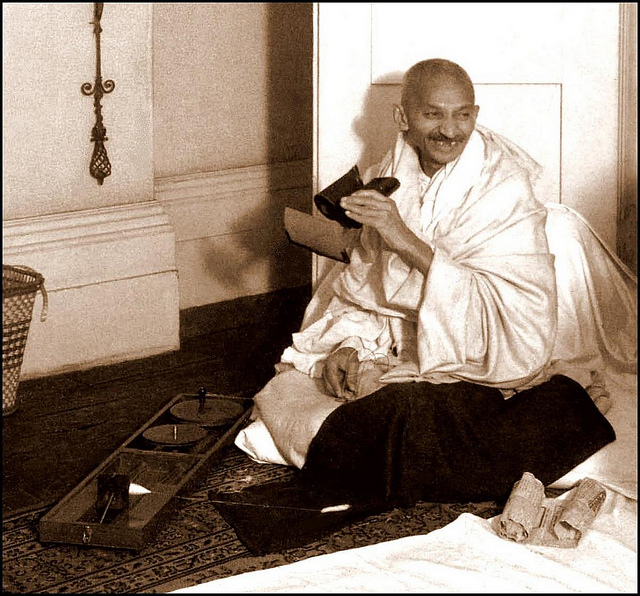
Poking through 11+ years of posts I find information that’s as useful now as when it was written.
Golden Oldies is a collection of the most relevant and timeless posts during that time.
Coaches, pundits, etc., offer advice on how to handle disrespect, bullying and other negative behavior, some of which is very good. But the approach I like best is summed up in this story of Gandhi and his professor.
The difference between what Gandhi did and what most people do today is that it involved no anger or four letter words; Gandhi used his intelligence to turn the professors own belittling comments against him — and he did it with grace.
Read other Golden Oldies here.
I am frequently asked how to deal with arrogance, disrespect and other antisocial behavior.
Often, the people asking are looking for approaches that echo the classy insults post from 2009.
KG Charles-Harris recently provided a brilliant example of how to handle such comments, with class and amiable good will—although the recipient might not agree.
While I doubt that the following actually happened, that doesn’t change the intelligence and elegance behind the responses.
When Gandhi was studying law at the University College of London, there was a professor, whose last name was Peters, who felt animosity for Gandhi, and because Gandhi never lowered his head towards him, their “arguments” were very common.
One day, Mr. Peters was having lunch at the dining room of the University and Gandhi came along with his tray and sat next to the professor. The professor, in his arrogance, said, “Mr. Gandhi: you do not understand… a pig and a bird do not sit together to eat,” to which Gandhi replies, “You do not worry professor, I’ll fly away ,” and he went and sat at another table.
Mr. Peters, green of rage, decides to take revenge on the next test, but Gandhi responds brilliantly to all questions. Then, Mr. Peters asked him the following question: “Mr Gandhi, if you are walking down the street and find a package, and within it there is a bag of wisdom and another bag with a lot of money; which one will you take?”
Without hesitating, Gandhi responded, “The one with the money, of course.”
Mr. Peters, smiling, said, “I, in your place, would have taken the wisdom, don’t you think?”
“Each one takes what one doesn’t have,” responded Gandhi indifferently.
Mr. Peters, already hysteric, writes on the exam sheet the word “idiot” and gives it to Gandhi. Gandhi takes the exam sheet and sits down.
A few minutes later, Gandhi goes to the professor and says, “Mr. Peters, you signed the sheet, but you did not give me the grade.”
The ‘trick’ is responding to the actual content, rather than the intent or the person, and turning the put-downs back on the speaker.
A good lesson for us all.
Image credit: Okinawa Soba
Posted in Communication, Golden Oldies, Personal Growth, Role Models | No Comments »
Wednesday, April 25th, 2018
 Backstage at the Crunchies 2013. Photo by Max Morse for TechCrunch. Today was crazy (the aftermath of having a tree fall on your house) and I don’t have time to write a full post.
That said, I want to share an article on how individuals can band together to start changing a negative to a positive.
I hope you find The 36 Women Secretly Breaking Up Silicon Valley’s Old Boys’ Club as interesting as I did.
Now look around your little corner of the world and see where you can make a difference, too.
Image credit: TechCrunch via Wilimedia
Posted in Role Models | No Comments »
Friday, March 16th, 2018
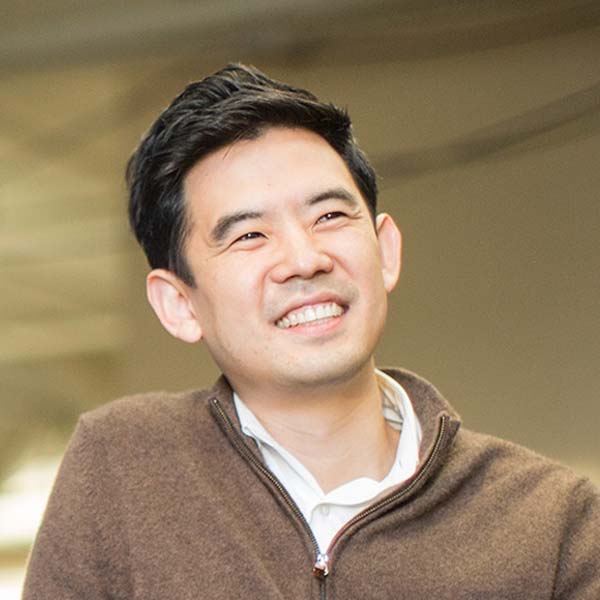
After reading about Gusto’s approach to diversity, I posed this question to a male founder I know and a friend of his, also a founder.
As a founder, what would you do if a top performer asked for a one-on-one meeting because she was uncomfortable and being treated poorly as the one woman on a team of 18 men.
The responses weren’t surprising; one was disappointing and the other disgusting.
One said he would do what he could, but also tell her that she’d be better off if she toughened up.
I don’t know the second guy very well, but it turned out that he is much more a bro. He said he’d tell her to stop whining and “grow a pair” and if it still bothered her maybe software engineering wasn’t where she belonged.
Compare them to Gusto cofounder and CTO Edward Kim’s, response.
Kim, Lee says, was extraordinarily receptive. In fact, he made it a personal project to study the gender breakdown on the engineering teams at other tech firms. The numbers he found were dismal.
Only 12% of the engineering staffers at 84 tech firms were female… He also read a 2015 McKinsey study showing that companies with diverse workforces outperform financially. “The fact that no one else in tech was able to really crack the gender diversity nut and solve it represented an opportunity for us,” Kim says. “If we want to reimagine what HR is like for the very diverse workforces of our small-business customers, we ourselves have to build a diverse workforce.”
Boston Consulting published findings similar to McKensey’s in January. (Well worth reading.)
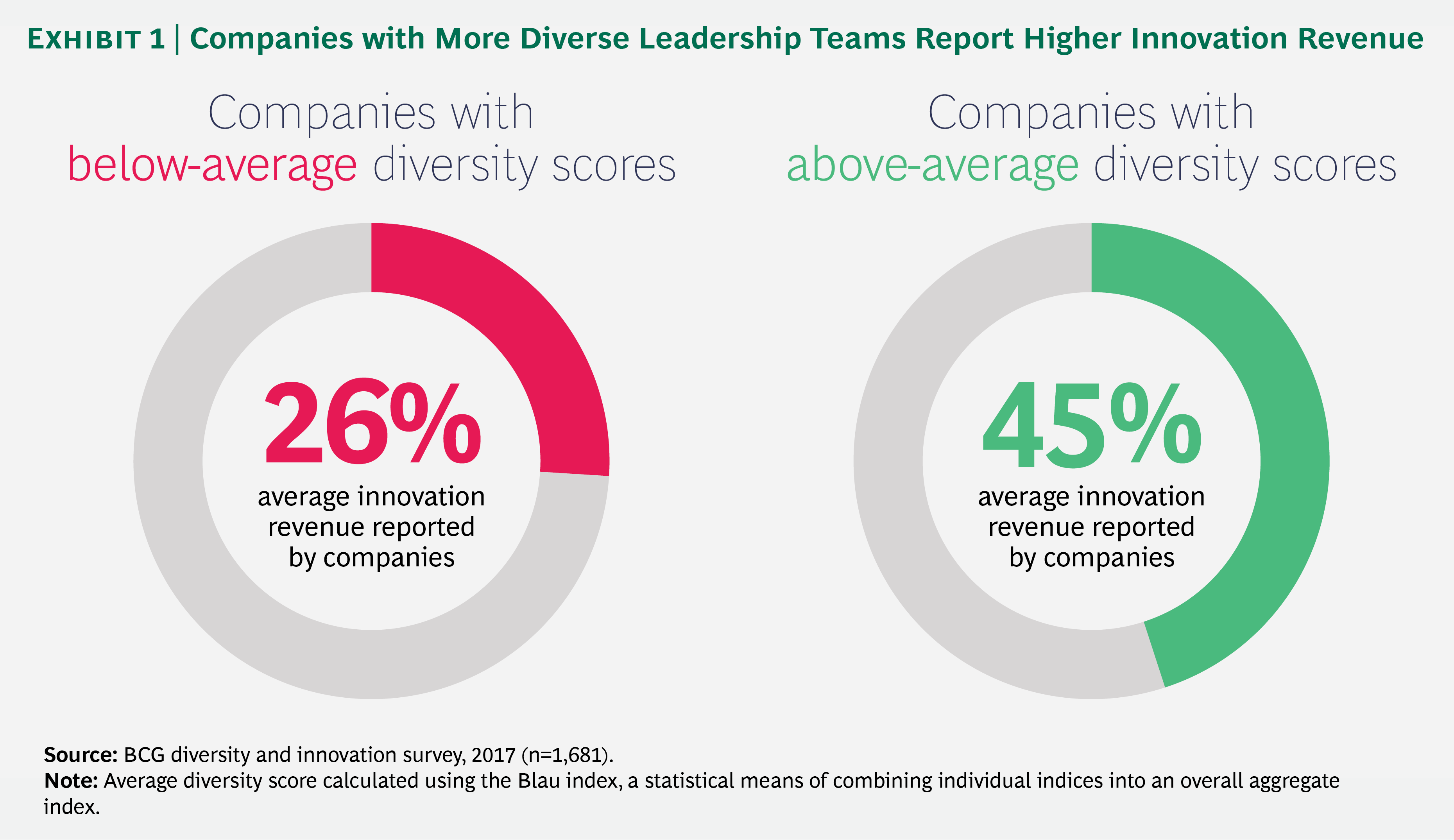 Kim’s and Gusto’s efforts have paid off handsomely. Kim’s and Gusto’s efforts have paid off handsomely.
- Gusto’s women-only recruiting effort lasted six months. It stopped, Kim says, because “we exceeded our goals.”
- Though hiring women engineers took more time, Kim says, Gusto never dropped its standards. “It bothers me when people say that prioritizing diversity lowers the bar in terms of the caliber of talent you’re able to hire,” he says. “That is simply not true.” Nor, he says, was there any pushback from inside Gusto.
- Gusto also addressed its compensation policy. Since 2016 its salaries have been audited by Mercer, a human resources consulting firm, which has found no gender pay disparity. Benefits include 16 weeks of paid leave for a primary parent, plus an additional $100 a week for groceries and food deliveries, $100 a month for six months of housecleaning and up to $500 for a baby-sleep coach.
- Now that 17 of Gusto’s 70 engineers are female, it’s getting a little easier, says Gusto’s HR head, Maryanne Brown Caughey. “It’s kind of a domino effect,” she says. “Women know they’re joining a welcoming community.”
While Kim is pleased with the results, he isn’t resting on his laurels.
While Gusto has made progress, its engineering team has no Latinos and no African-Americans. Kim says Gusto has two hiring goals in 2018: senior women and racial diversity in engineering. “The way we make progress is by focusing on one problem,” Kim says, “and then we move on to the next.”
Role model, indeed; techdom needs a lot more founders like Kim.
Image credit: Gusto
Posted in Culture, Hiring, Role Models | No Comments »
|
 Subscribe to
Subscribe to
MAPping Company Success
About Miki 
Clarify your exec summary, website, etc.
Have a quick question or just want to chat? Feel free to write or call me at 360.335.8054
The 12 Ingredients of a Fillable Req
CheatSheet for InterviewERS
CheatSheet for InterviewEEs™
Give your mind a rest. Here are 4 quick ways to get rid of kinks, break a logjam or juice your creativity!
Creative mousing
Bubblewrap!
Animal innovation
Brain teaser
The latest disaster is here at home; donate to the East Coast recovery efforts now!
Text REDCROSS to 90999 to make a $10 donation or call 00.733.2767. $10 really really does make a difference and you'll never miss it.
And always donate what you can whenever you can
The following accept cash and in-kind donations: Doctors Without Borders, UNICEF, Red Cross, World Food Program, Save the Children
*/
?>About Miki
About KG
Clarify your exec summary, website, marketing collateral, etc.
Have a question or just want to chat @ no cost? Feel free to write
Download useful assistance now.
Entrepreneurs face difficulties that are hard for most people to imagine, let alone understand. You can find anonymous help and connections that do understand at 7 cups of tea.
Crises never end.
$10 really does make a difference and you’ll never miss it,
while $10 a month has exponential power.
Always donate what you can whenever you can.
The following accept cash and in-kind donations:
|











 and
and 





